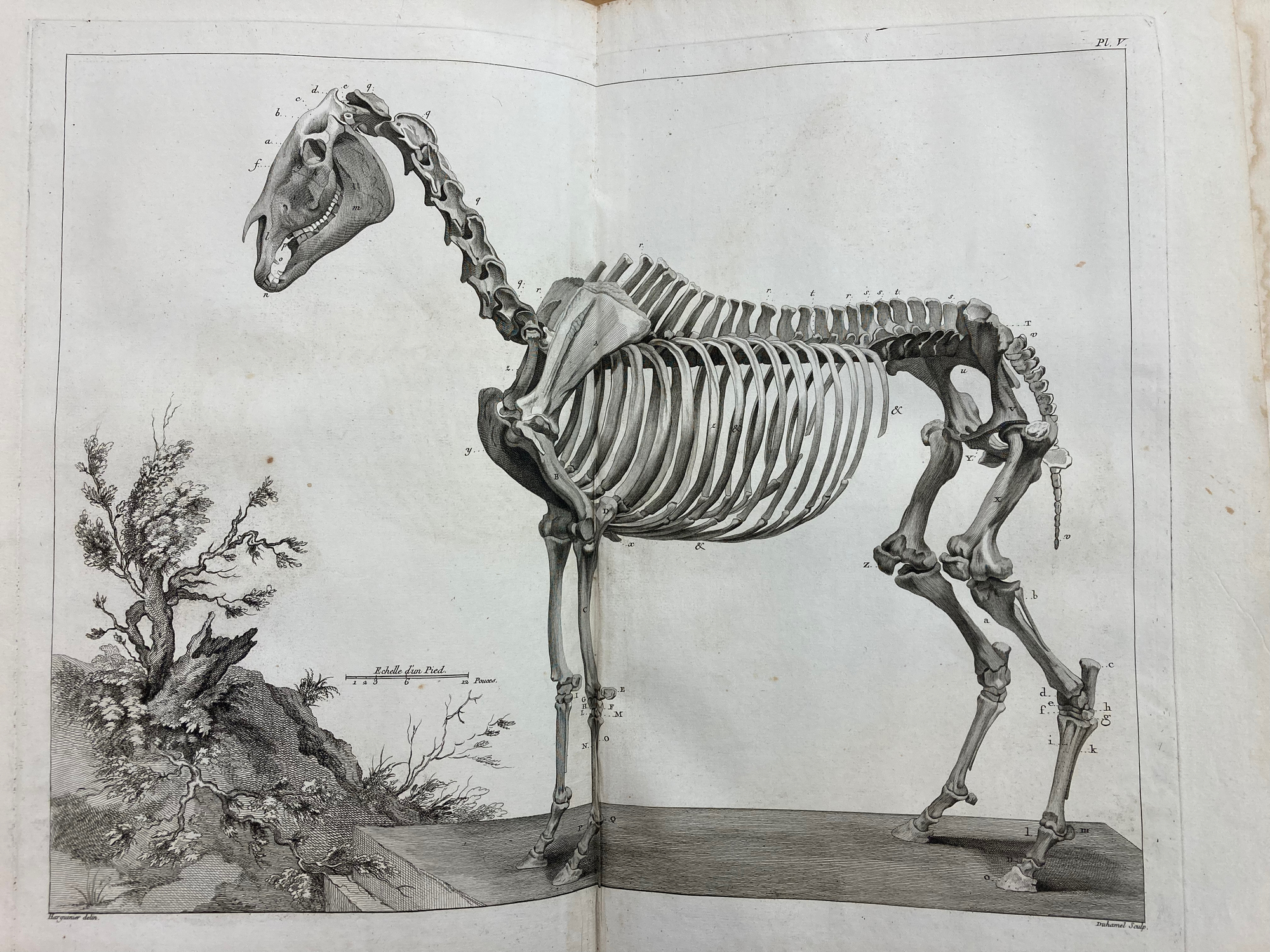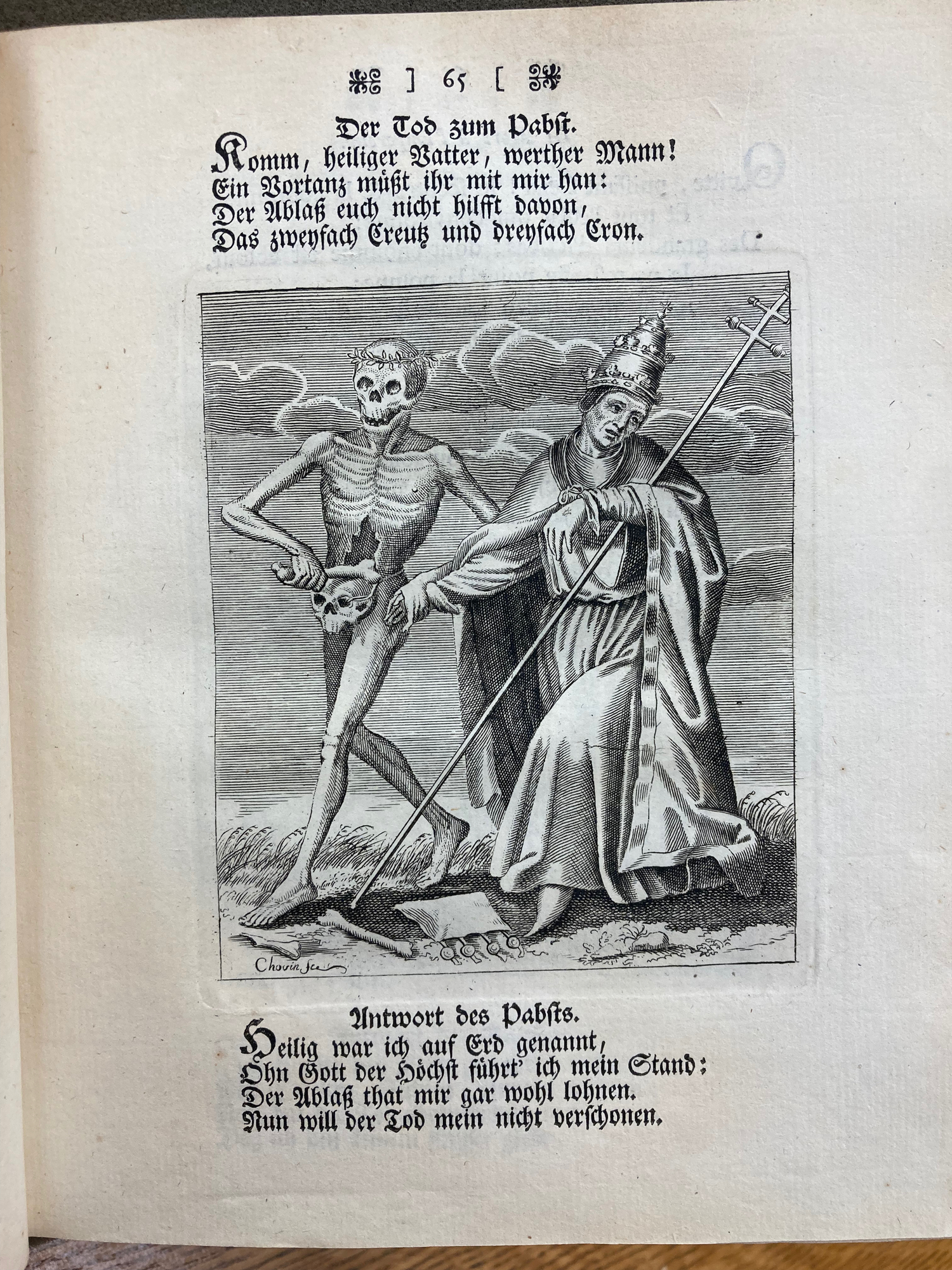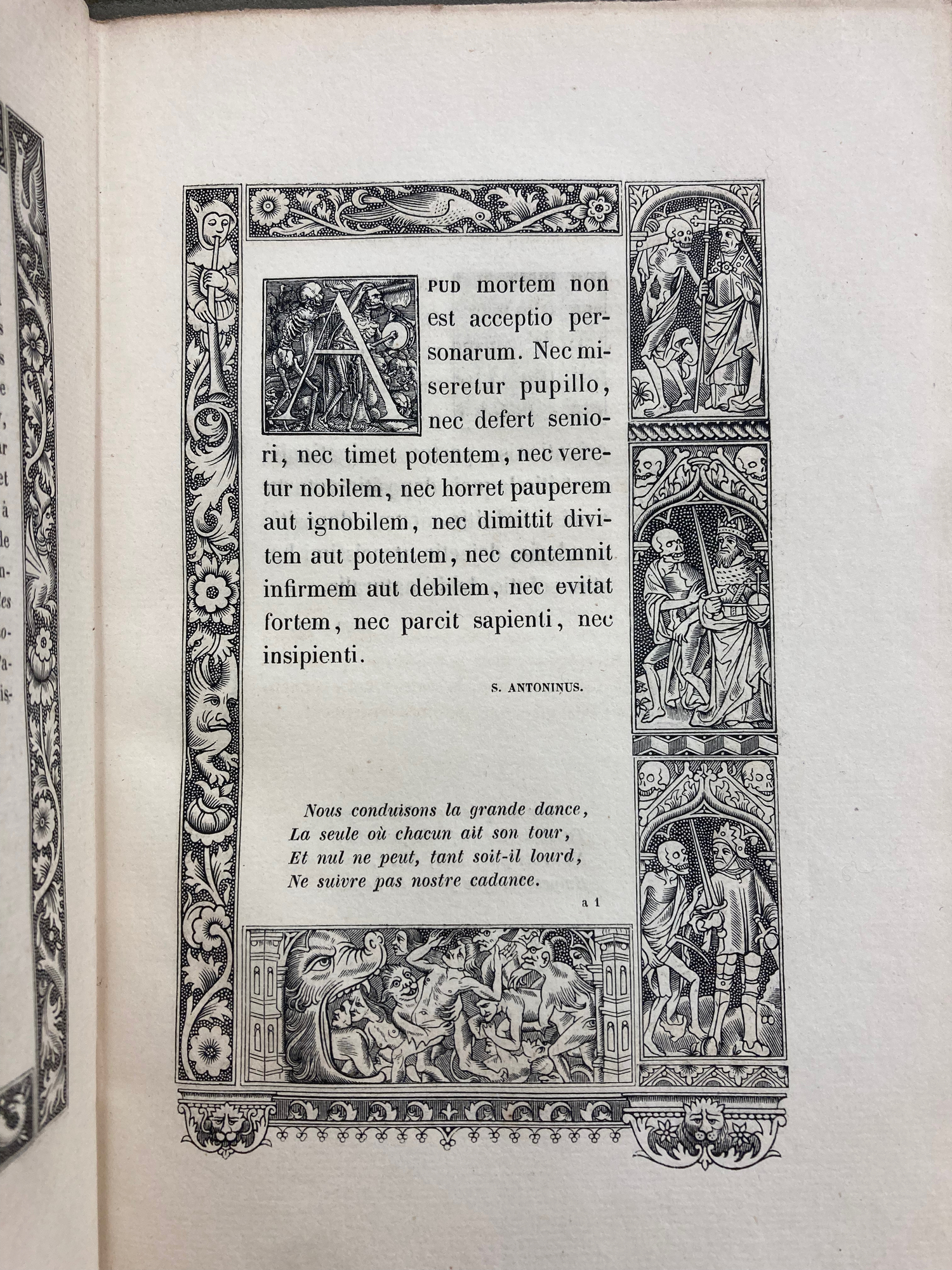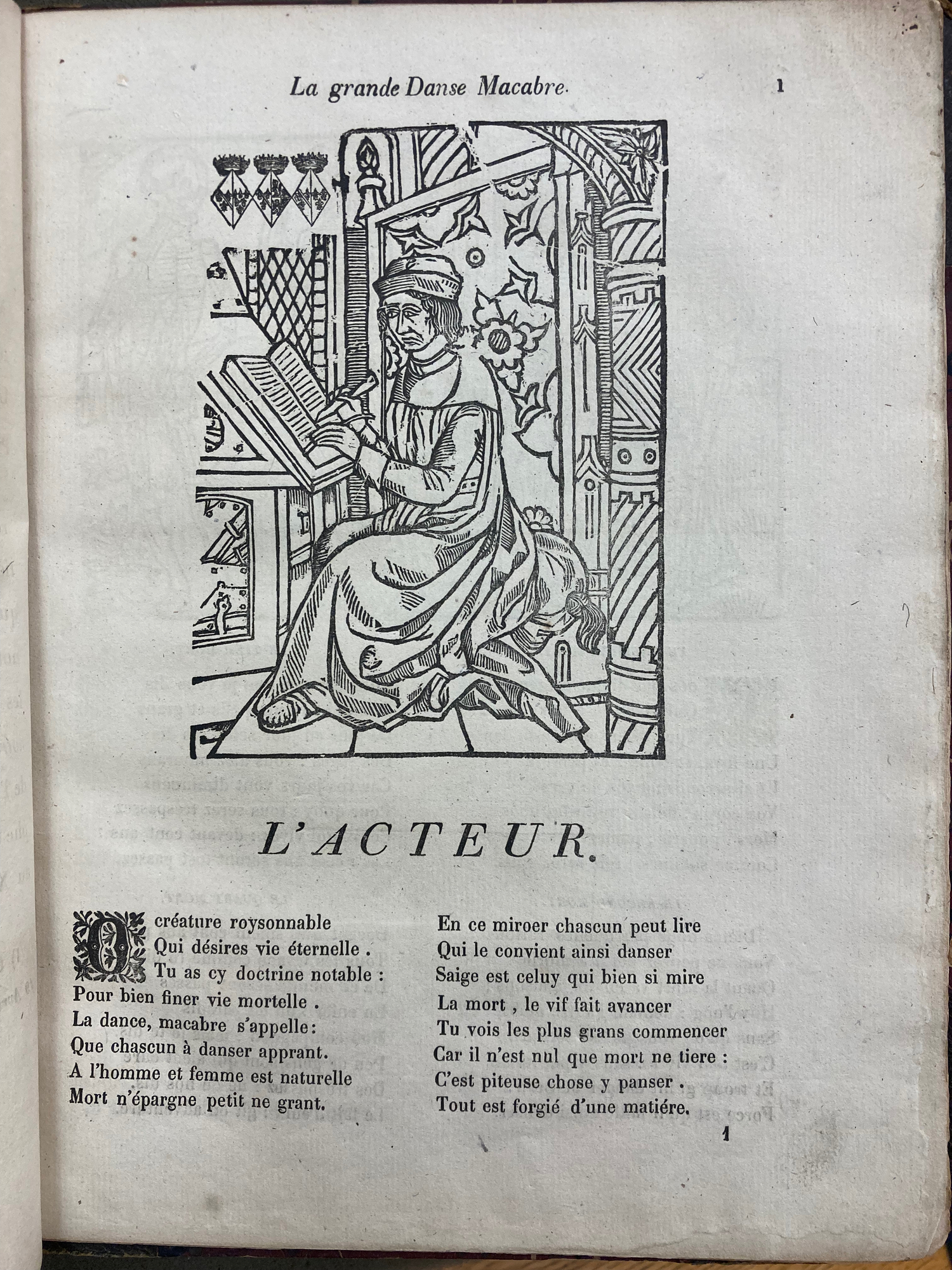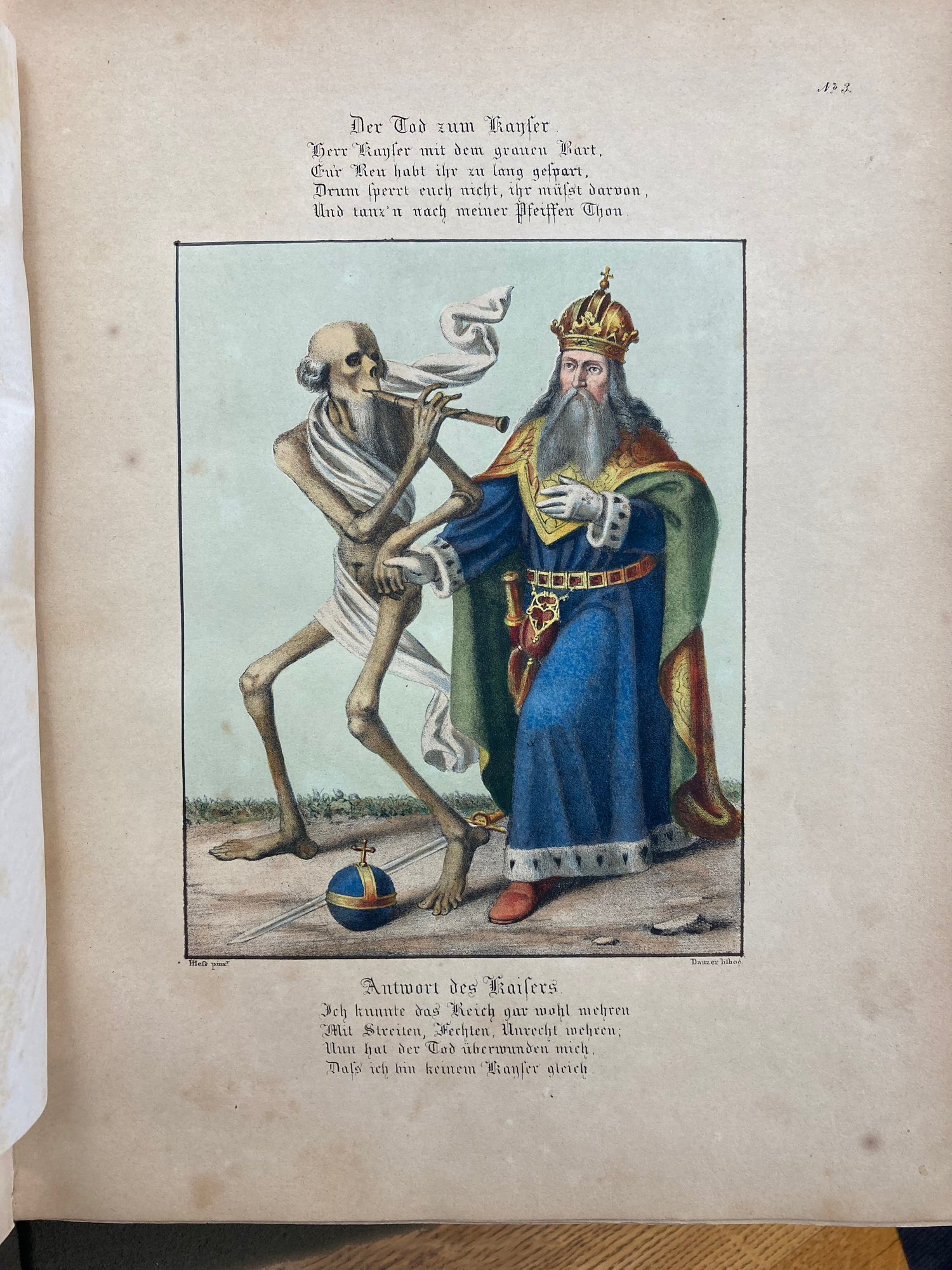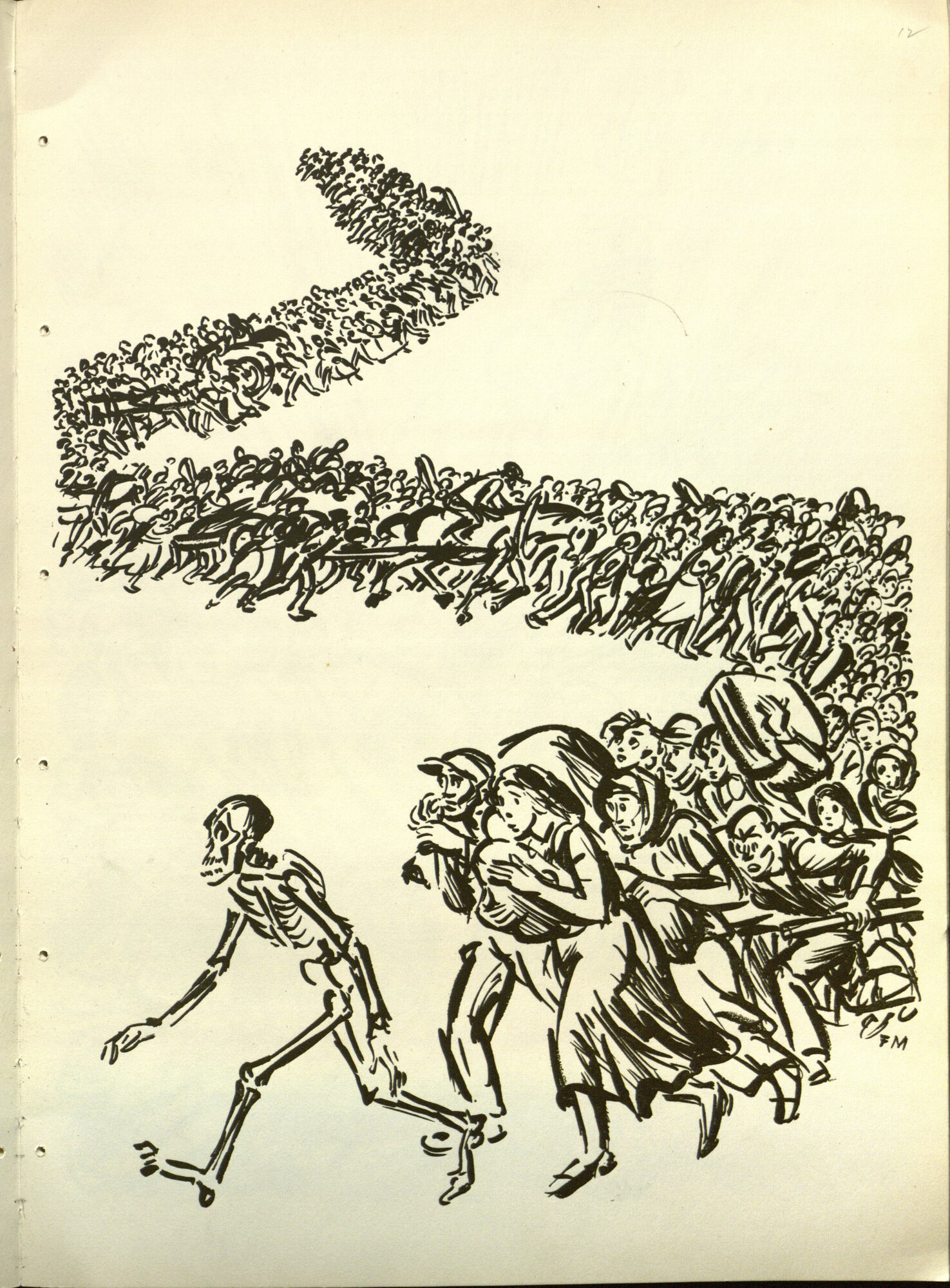No Bones About It: An exhibit of spooky skeletons
Livres sur les Os
The French-language books included in the exhibit run the gamut from a book on horse anatomy to a post-WWII wordless novel. Though the oldest book is Lafosse’s Cours d’hippiatrique (1772), the oldest art is probably in La grande danse Macabre des hommes et des femmes (1862), which used 17th-century printing blocks. The five dances of the dead included here show a great variety in terms of art and relationship to their subject matter: some are moralistic, others art historical, and still another is a response to the horrors of war specifically rather than death in general.
Cours d’hippiatrique, ou Traité complet de la médecine des chevaux, orné de soixante et cinq planches gravées avec soin.
Philippe-Étienne Lafosse (1738-1820)
SF951 .L33 1772
Lafosse was a veterinarian, who had been trained by his father, a farrier, and was already giving lectures of his own at the age of 18. At the age of 20, he joined the French army as a hippiatrist (a specialist in horse medicine). He is particularly famous for his books on horse anatomy, including this one, first published in 1772.
La danse des morts, comme elle est dépeinte dans la louable et célebre ville de Basle, pour servir de miroir de la nature humaine.
Jacques-Antony Chovin (1720-1776), engraver
N7720 .B32 1789
The city of Basel is famous for its wall-paintings of the Dance of the Dead, which dated back to the 15th century. They were destroyed in the 19th century, but were heavily copied and likely influenced Hans Holbein, the famous 15th-century artist whose own representations of the Dance of the Dead proved similarly influential. Death in this copy from the 1700s has lost most of his flesh but still has enough of it to be able to pass for human, at least in some images.
L’alphabet de la mort de Hans Holbein: entouré de bordures du XVIe siècle et suivi d’anciens poëmes français sur le sujet des trois mors et des trois vis.
Hans Holbein (1497-1543), designer
Anatole de Montaiglion (1824-1895), text
N7720 .H6 M6 1856
The German artist Hans Holbein the Younger was born in Augsburg but spent much of his career in Basel. He is especially known for his portrait painting — many important people had their portraits done by him — and his religious work. His Dance of Death put a modern spin to the older medieval art tradition and was widely copied.
La grande danse Macabre des hommes et des femmes.
N7720 .T7 1862
Although the book itself is from 1862, the woodcuts used in the book are the same ones used in a 1641 printing of the book at Troyes.
La danse des morts.
Hieronymus Hess (1799-1850)
N7720 .H47
Hieronymus Hess was a Swiss painter and drawing instructor. This version of the Dance of the Dead, probably copied from the Basel Dance, is done in color lithographs.
Danse Macabre.
Frans Masereel (1889-1972)
741 .M377d 1946
The Belgian artist Frans Masereel is known for his woodcuts and his wordless novels. A pacifist who refused to serve in either World War, Masereel was unable to return to Belgium after WWI due to his pacificism. His later works are marked by his experiences during World War II, as is this Dance of the Dead, another one of his wordless novels.
